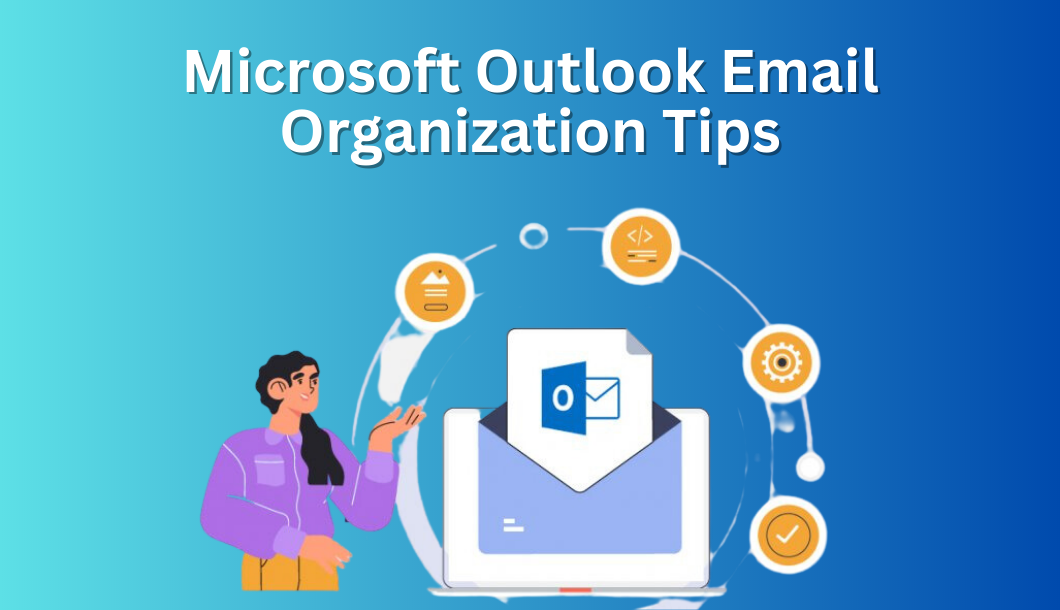Microsoft Outlook Email Organization Tips. Microsoft Outlook is an important dispatch operation tool that can help you stay systematized and productive. Then are some tips to effectively organize your emails in Outlook.
Produce flyers
Set up flyers to classify and store emails grounded on specific motifs, systems, or connections. To produce a new brochure, right-click on your mailbox, select” New Folder,” and name it consequently. You can also produce subfolders to further organize your emails.
Use Rules
Outlook allows you to produce rules that automatically sort incoming emails into specific flyers grounded on criteria you define. For illustration, you can produce a rule to move all emails from a particular sender to a designated brochure. To set up rules, go to the” Home” tab, click on” Rules,” and also elect” Manage Rules & Cautions.”
Prioritize with orders
Assign color-enciphered orders to emails to prioritize or group them. For case, you can use different colors for emails related to critical tasks, meetings, or particular correspondence. Right-click on a dispatch, choose” classify,” and select the applicable order.
Flag Important Emails
Use the” Flag” point to mark important emails that bear follow-up or action. You can add a flag by right-clicking on the dispatch and opting for ” Flag.” also, you can set due dates for flagged particulars, helping you stay on top of important tasks.
Produce Quick Steps
The quick way in Outlook allows you to automate common conduct, similar to moving emails to specific flyers, encouraging them to associates, or marking them as read. To pierce Quick Way, go to the” Home” tab and click on” Quick Way.”
Archive Old Emails
To help your inbox from getting cluttered, regularly library old emails that you do not need to pierce constantly. Archiving moves the emails to a library brochure, keeping your inbox cleaner and more manageable. You can set up AutoArchive to automatically move aged emails to the library brochure.
Use Search and Filters
Outlook’s hunt and filtering capabilities are robust and can help you snappily find specific emails. Use keywords, sender names, or date ranges in the hunt box to constrict your results. You can also apply pollutants to sort emails by orders, attachments, or read/ unlettered status.
Schedule Cleanup
Outlook provides a useful” Clean Up” point that allows you to remove spare dispatches from dispatch exchanges, retaining only the rearmost dispatch and applicable replies. This can help reduce clutter and streamline your mailbox.
Set Reminders
To ensure you noway miss important emails or tasks, use Outlook’s erected-in memorial point. You can add monuments to emails, movables, or tasks, helping you stay on top of your commitments.
Customize Views
Conform your inbox view to display the information most applicable to you. You can add or remove columns, acclimate the reading pane, and change the sorting order of emails to match your preferences.
By enforcing these tips, you can optimize your dispatch association in Microsoft Outlook and manage your inbox more efficiently, leading to increased productivity and reduced stress.
Outlook timetable Scheduling Best Practices
1. Use Color- Coding
Assign different colors to colorful types of events or orders to snappily identify them on your timetable.
2. Set dereliction monuments
Configure dereliction monuments for movables or events to admit announcements in advance.
3. Schedule Buffer Time
Leave some buffer time between movables to avoid overbooking and allow for transitions.
4. Use Scheduling Assistant
When setting up meetings, use the Scheduling Assistant point to find the stylish time for all actors.
5. Share Your timetable
Partake your timetable with associates or family members to coordinate schedules more efficiently.
Outlook Inbox Management Strategies
1. Apply the 4D’s
Borrow the” cancel, Delegate, Do, postpone” approach to efficiently handle incoming emails.
2. Use flyers and Rules
Produce flyers and rules to automatically sort and organize incoming emails grounded on the criteria you define.
3. Unsubscribe and Block
Unsubscribe from unwanted newsletters and block spam dispatch addresses to reduce inbox clutter.
4. Snooze or Schedule Emails
Use the snooze or schedule point to deal with emails at a more accessible time.
Outlook Dispatch Rules and Pollutants Setup
1. Automate Dispatch operation
Produce rules to automatically move, classify, or forward emails grounded on sender, subject, or content.
2. Prioritize Emails
Set up rules to punctuate or flag emails from important senders or containing specific keywords.
3. Produce a” To-Do” brochure
Use rules to deflect emails that bear action to a designated” To-Do” brochure.
How to Set Up Autographs in Outlook
- Go to train> Options> Correspondence, and under the” Compose dispatches” section, click on” Autographs.”
- Click” New” to produce a new hand, give it a name, and enter your hand details in the textbook box.
- Choose whether to apply the hand to new dispatches, replies, or forwards, and click” OK” to save your hand.
Outlook Mobile App Features
- Push announcements Enable drive announcements to admit real-time updates on your mobile device.
- Swipe conduct Customize swipe conduct to snappily library, cancel, or schedule emails on the go.
- Quick Replies Use predefined quick reply templates to respond to emails more efficiently.
Outlook Tasks and To-Do List Management
- Convert Emails to Tasks Convert important emails into tasks to organize your to-do list.
- Set Precedences and Due Dates Prioritize tasks and assign due dates to stay on track and meet deadlines.
- Classify and Group Tasks Use orders and flyers to group related tasks and systems.
Outlook timetable participating warrants
- Share Your Timetable Right- click on your timetable, select” Share,” and choose the applicable sharing settings.
- Define Access situations Set warrants for viewing, editing, or managing your timetable.
- Shoot timetable via Dispatch Partake your timetable with others by transferring it as a dispatch attachment or a link.
Outlook Dispatch Encryption Settings
- Secure dispatches Use Outlook’s erected-in encryption point or S/ MIME instruments to shoot translated emails.
- Request Encrypted Responses Set up your dispatch settings to request translated responses from donors.




